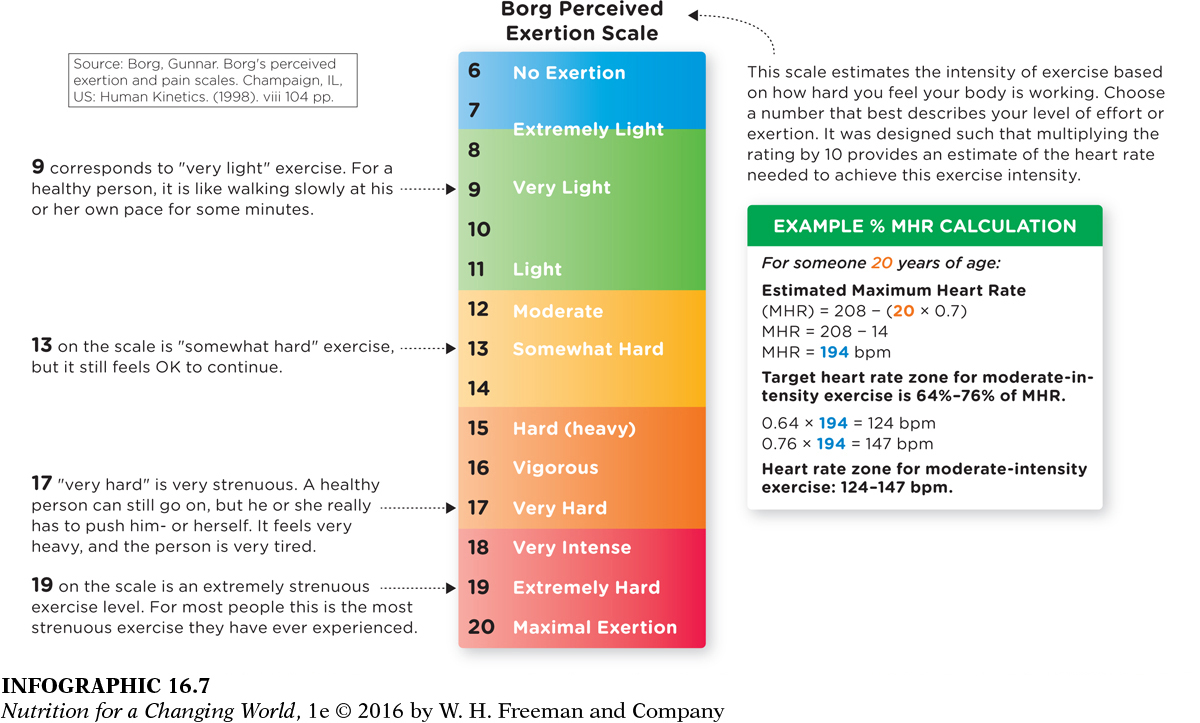MEASURES OF EXERCISE INTENSITY
MAXIMAL OXYGEN CONSUMPTION (VO2max) the maximum amount of oxygen that can be used at the peak of intense aerobic exercise
A high-
The harder an athlete works during an activity, the more oxygen is consumed and the faster her heart beats until she reaches her VO2max, or her maximum heart rate. Exercise intensity is often estimated as a percent of one’s VO2max, or as a percent of one’s maximum heart rate.
The accuracy of determining exercise intensity using heart rate depends on the accuracy of estimating maximum heart rate (MHR). One of the best methods for estimating maximum heart rate is MHR = 208 − (age × 0.7). However, this is only an estimate of MHR, and it does not work well for everyone. For example, older individuals who have remained fit throughout their adult life typically have a MHR well-

Question 16.5
 Vigorous-
Vigorous-
To determine the heart rate zone of 77% to 95% intensity for a 30-
208−(30 years × .07)
208−21
MHR= 187
Next, calculate target heart rate zone of 77% to 95% of MHR.
.77 × 187 = 144 beats per minute
.95 × 187 = 178 beats per minute
The heart rate zone is 144 to 178 beats per minute.